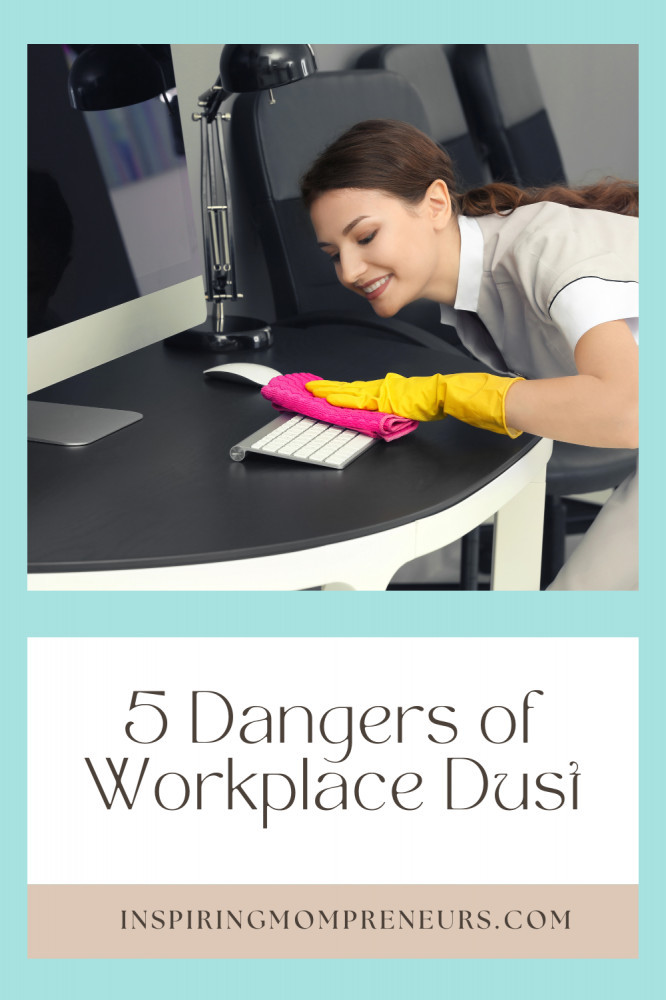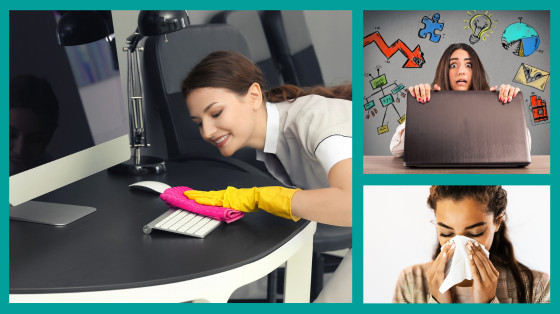Dust doesn’t just make your workplace look less presentable; it can also be a hazard to you and your employees. Below are just some of the dangers of workplace dust and some of the measures that you can take to keep your workplace dust-free.
5 Dangers Of Workplace Dust
 1. Respiratory Issues
1. Respiratory Issues
The biggest danger of high dust levels is development of respiratory issues. Certain types of dust like flour dust and sawdust can lead to deadly lung problems if not protected against.
Good ventilation can help to get rid of dust from the air so that you and your employees aren’t constantly breathing it in – this could include extractor fans and air purification systems. If dust in the air is unavoidable, make sure that employees wear face masks to prevent them inhaling dust.
2. Eye/Sinus/Skin Irritation
You don’t have to suffer from a dust allergy to experience irritation as a result of dust. Many of us start sneezing and get watery eyes in dusty environments. In some cases, this can lead to problems like conjunctivitis and sinusitis.
While employees can be asked to wear safety goggles or masks in very dusty environments to reduce irritation, it’s often better to find ways of reducing dust levels in the air where possible. For example, a dusty cellar may just need to be cleaned and better ventilated.
3. Fire Hazard
Did you know that dust can be a fire hazard? Many forms of dust are flammable and can help fuel a fire. Keeping surfaces dust free could prevent fires from spreading as easily. Sawdust in a workshop or factory is one of the biggest dangers and should be regularly cleaned up – it only takes a spark from a socket to cause this sawdust to catch alight. Good ventilation will help to stop dust from piling up on surfaces.
4. Slip Hazard
A lot of dust on the floor could also be a slip hazard. Many fall injuries in factories and workshops are the result of dust. Keeping floors clean can prevent such fall injuries occurring. You could use a brush to sweep up this dust throughout the day, or you could invest in floor sweeping machines to help keep floors clean. Make sure that flooring is suitable for the environment so that it is easy to clean – flooring such as carpets are not recommended in dust-prone environments as they may just trap dust.
5. Machinery Failure
Dust can also clog up machinery. Not only can this cause machinery to stop working, but it can lead to more dangerous faults in some cases. Dust build-ups may cause machines to overheat and could lead to fires in some cases. In other cases, machinery may suddenly break down and lead to injuries.
Quite often, dust build-ups within machinery occur over a long period. Reducing dust levels in the air can stop machinery clogging up. Cleaning machinery regularly can also prevent build-ups – there are companies that specialise in cleaning industrial machinery, which includes taking machinery apart and getting rid of dirt and dust.
Final Thoughts
We hope this post about the five dangers of workplace dust has been helpful. Be sure to keep your work premises dusted and cleaned regularly to keep dust-related issues at bay.




